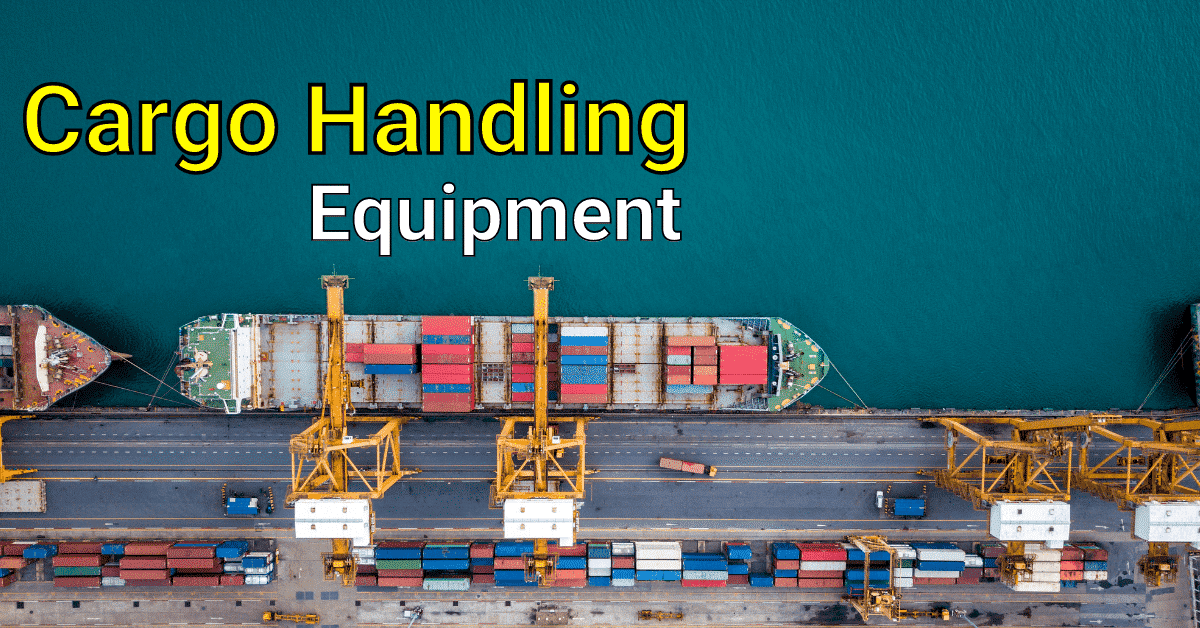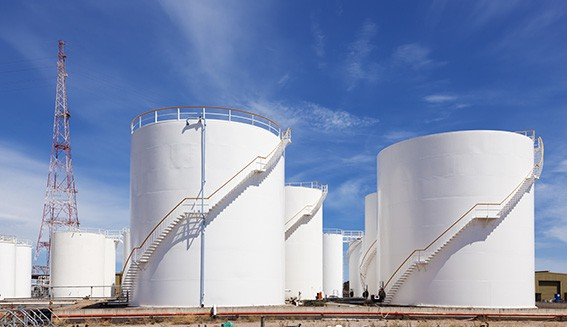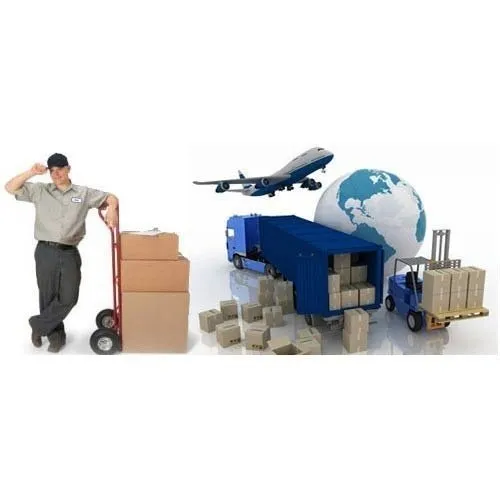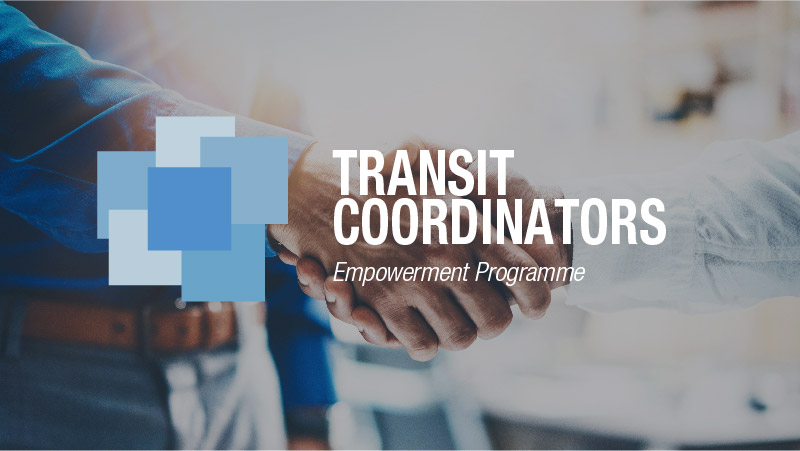Cargo Surveyor (1 years diploma)
Cargo Surveyor click here
Brief Job Description: The individual surveys safe loading, unloading and secured
carriage of cargo and also values the cargo
Qualifications Pack for Cargo surveyor

Electives
Elective 1: Containerised Cargo
This unit is about survey of containerized cargo at the time of stuffing and destuffing based on the shipping bill and the shipping manifest respectively
Elective 2: Dry Bulk Cargo
This unit is about survey and measurement of the liquid bulk cargo prior to
loading and on unloading based on the shipping bill and the shipping manifest
respectively
Elective 3: Liquid Bulk Cargo
This unit is about survey of liquid cargo and its volumetric measures prior to
loading and at unloading based on the shipping bill and the shipping manifest
respectively
Options
Option 1: EXIM Documentation
This unit is about verifying, checking and approving EXIM documentation to
enable smooth and error free transportation of goods
Personal Attributes:
The job holder should be observant, diligent and have an eye of detail with
respect to different external factors. S/He should have analytical and
mathematical approach and should complete activities on time and with
accuracy.
Description
Core Skills/Generic
Skills
Core Skills or Generic Skills are a group of skills that are key to learning and
working in today’s world. These skills are typically needed in any work
environment. In the context of the NOS, these include communication related
skills that are applicable to most job roles.
Function
Function is an activity necessary for achieving the key purpose of the sector,
occupation, or area of work, which can be carried out by a person or a group
of persons. Functions are identified through functional analysis and form the
basis of NOS.
Job role Job role defines a unique set of functions that together form a unique
employment opportunity in an organization.
Knowledge and
Understanding
Knowledge and Understanding are statements which together specify the
technical, generic, professional and organizational specific knowledge that an
individual needs in order to perform to the required standard.
National Occupational
Standards (NOS) NOS are Occupational Standards which apply uniquely in the Indian context
Electives
Electives are NOS/set of NOS that are identified by the sector as contributive
to specialization in a job role. There may be multiple electives within a QP for
each specialized job role. Trainees must select atleast one elective for the
successful completion of a QP with Electives
Options
Options are NOS/set of NOS that are identified by the sector as additional
skills. there may be multiple options within a QP. It is not mandatory to select
any of the options to complete a QP with Options.
Unit Code Unit code is a unique identifier for an Occupational Standard, which is
denoted by an ‘N’
Unit Title Unit title gives a clear overall statement about what the incumbent should be
able to do.
Occupation Occupation is a set of job roles, which perform similar/related set of functions
in an industry.
Organisational Context
Organisational Context includes the way the organization is structured and
how it operates, including the extent of operative knowledge managers have
of their relevant areas of responsibility.
Performance Criteria Performance Criteria are statements that together specify the standard of
performance required when carrying out a task.
Qualifications
Pack(QP)
Qualifications Pack comprises the set of NOS, together with the educational,
training and other criteria required to perform a job role. A Qualifications
Pack is assigned a unique qualification pack code.

Qualifications Pack
Code
Qualifications Pack Code is a unique reference code that identifies a
qualifications pack.
Scope Scope is the set of statements specifying the range of variables that an
individual may have to deal with in carrying out the function which have a
critical impact on the quality of performance required.
Sector
Sector is a conglomeration of different business operations having similar
businesses and interests. It may also be defined as a distinct subset of the
economy whose components share similar characteristics and interests.
Sub-Sector Sub-sector is derived from a further breakdown based on the characteristics
and interests of its components.
Sub-functions Sub-functions are sub-activities essential to fulfil the achieving the objectives
of the function.
Technical Knowledge Technical Knowledge is the specific knowledge needed to accomplish specific
designated responsibilities.
Description
CFS Container Freight Stations
CIF Cost Insurance and Freight
DGFT Directorate General of Foreign Trade
EDI Electronic Data Interchange
ERP Enterprise Resource Planning
FOB Freight on Board
HAZCHEM Hazardous Chemicals
HR Human Resources
HSN Harmonized System of Nomenclature
ICD Inland Container Depot
ICEGATE Indian Customs Electronic Commerce/ Electronic Data Gateway
ICES Indian Customs EDI System
IMDG International Maritime Dangerous Goods
INCOTERMS International Commerce Terminology
ISCO International Standard Classification of Occupations
LEO Let Export Order
MHE Material Handling Equipment
MSDS Material Safety Data Sheets
NCO National Classification of Occupations
NOS National Occupational Standards
NSQC National Skills Qualifications Committee
NSQF National Skills Qualifications Framework
OCC Out of Customs Charge
OH&S Occupational Health and Safety
OS Occupational Standards
PGA Participative Government Agencies
PPE Personal Protective Equipment
QP Qualifications Pack
RES Remote EDI System
SDF Statutory Declaration Form
SDS Safety Data Sheets
SOP Standard Operating Procedures
Verify cargo and vessel information
Description This unit is about reviewing documentation with respect to outgoing and incoming
cargo and vessel
Scope This unit/task covers the following:
• Review vessel documents prior to berthing
• Review export related documentation for cargo
• Review import related documentation for cargo
Range: Standard Operating Procedures (SOP), handbook, computer, projector,
worksheet, stationery etc.
Performance Criteria(PC) w.r.t. the scope
Element Performance Criteria
Review vessel
documents prior to
berthing
To be competent, the user/ individual must be able to:
PC1. receive documents from the vessel prior to its arrival at port
PC2. check that vessel information is correct and verify as per manifest
PC3. check the bill of lading against manifest for cargo
PC4. endorse the request for docking of the vessel
Review export
related
documentation for
cargo
To be competent, the user/ individual must be able to:
PC5. receive let-out export documents from the shipper or freight forwarder
PC6. review shipping bill for classification of items and check for mandatory
clearances from customs and Participative Government Agencies (PGAs) etc.
PC7. coordinate with backend officials of consolidators, shippers and freight
forwarders to resolve queries regarding cargo documentation
PC8. endorse the bill of lading post verification for unloading and stuffing of cargo
and loading of containers/ cargo onto the vessel
Review import
related
documentation for
cargo
To be competent, the user/ individual must be able to:
PC9. receive shipping manifest and the bill of entry from the shipper or freight
forwarder and check that necessary approvals related to customs and other
PGAs are taken prior to import
PC10. check that the cargo and containers match as per the manifest and the bill of
entry
PC11. coordinate with backend officials of consolidators, shippers and freight
forwarders to resolve queries regarding cargo documentation
PC12. endorse the shipping manifest post verification for unloading and de- stuffing
of cargo
Knowledge and understanding (K)
A. Organizational
context
(Knowledge of the
company /
organization and
its processes)
The individual on the job needs to know and understand:
KA1. organizational procedures
KA2. different hubs and service stations of the organization
KA3. documentation and reporting as per organization’s mandate
KA4. security procedures to be followed
KA5. escalation matrix for reporting identified problems
KA6. risk and impact of not following defined procedures/work instructions
KA7. coding system followed to label mail
KA8. IT system and Enterprise Resource Planning (ERP) system of the organization
B. Technical knowledge
The individual on the job needs to know and understand:
KB1. use of various cargo handling equipment
KB2. basic mathematics and engineering
KB3. measurement of vessel draughts

KB4. procedures of tank cleaning
KB5. requirements regarding handling of cargo
KB6. various clearances required for different type of cargo
KB7. geographical locations and route maps across the globe
KB8. different type of vessels and cargo and container sizes
KB9. handling of hazardous and non-hazardous cargo
KB10. stuffing and de-stuffing norms with respect to different cargo
KB11. special characteristics and handling requirements of shipments, if any
Skills (S)
A. Core skills/
generic skills
Reading skills
The user/individual on the job needs to know how to read:
SA1. written instructions
SA2. shiping manifest, Bill of lading shipping bills and related documents
SA3. ERP and computer generated reports
Writing skills
The user/individual on the job needs to know how to write:
SA4. work-orders and instructions
SA5. checklist of activities, delays, , etc
SA6. daily reports
Oral communication (listening and speaking skills)
The user/individual on the job needs to know how to:
SA7. communicate with on ground staff performing stuffing and de-stuffing of cargo
SA8. communicate and collect information from different departments
SA9. communicate with shippers and freight forwarders when required
B. Professional skills Decision making
The user/individual on the job needs to know how to:
SB1. identify damages to packages and containers
SB2. decide when to hold an endorsement
SB3. decide when to escalate issues with respect to stuffing and de-stuffing
Plan and organize
The user/individual on the job needs to know how to:
SB4. plan and estimate the co-ordination required for resolving a querry.
SB5. maintain punctuality
SB6. respond to the client in a timely manner
SB7. prioritize and execute tasks based on client requirements
SB8. make work plans and resource allocation plans
SB9. make checks on execution of work plans
SB10. be a team player and achieve joint goals
Customer centricity
The user/individual on the job needs to know how to:
SB11. adhere to the customer timelines
SB12. address the urgency regarding shipments and activities
Problem solving
The user/individual on the job needs to know how to:
SB13. identify trends/common causes for delays, issue in tracking, etc.
SB14. co-ordinate and handle major issues with different departments
SB15. identify bottlenecks and operational problems and suggest remedial action
Analytical thinking
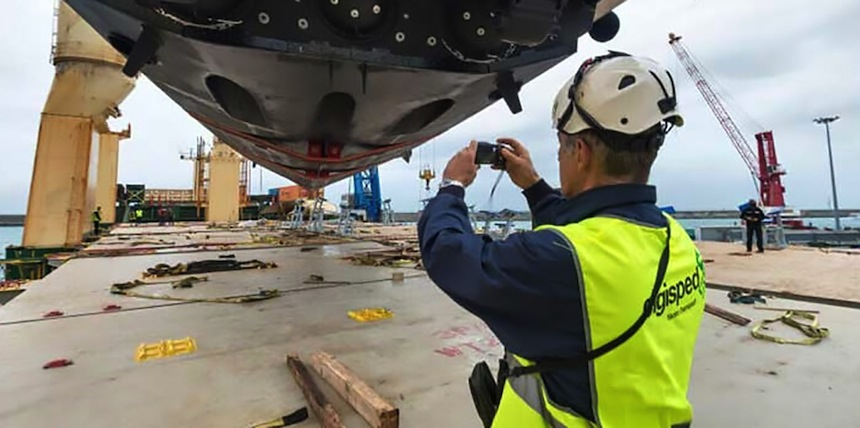
The user/individual on the job needs to know how to:
SB16. assess the resource requirement for a particular task at hand
SB17. assess and prepare for backup transport in case of continous delays
SB18. plan for shipment movement so that the resources are optimally utilised
Critical thinking
The user/individual on the job needs to know and understand how to:
SB19. resolve issues in a qucik and cost effective manner
SB20. develop work plans factoring in external factors
Perform cargo valuation and certify
Description This unit is about valuing cargo and providing certification
Scope This unit/task covers the following:
• Check the suitability of the vessel to carry cargo
• Perform draught measurement and cargo valuation
• Certify cargo is safe and secured
Range: Standard Operating Procedures (SOP), handbook, computer, projector,
worksheet, stationery etc.
Performance Criteria(PC) w.r.t. the scope
Element Performance Criteria
Check the suitability
of the vessel to
carry cargo
To be competent, the user/ individual must be able to:
PC1. check if the vessel is equipped to carry the required cargo
PC2. inspect the hatch prior to loading and unloading for any damages and check if
the alternate unused valves are sealed
PC3. check if the tank/hold for breakage, fractures, corrosion, coating, hull
damage, etc.
PC4. check if the cargo pumps, stripping equipment, conveyor and
loading/unloading equipment are fully operational with emergency controls
PC5. check that all closing appliances such as gaskets, high level alarms, vapour
locks, air locks are calibrated and operational
Perform draught
measurement and
valuation
To be competent, the user/ individual must be able to:
PC6. verify that the vessel is upright in still and calm waters with minimum trim,
and correct computation based on tidal conditions, currents, etc.
PC7. check the ballast tanks and take measurement of weight and density of water
present
PC8. factor in adjustments regarding existing cargo weight and residual weight of
the vessel due to ballast water, oils, etc.
PC9. measure the vessel’s forward, aft, mid-ship, port-side and starboard draughts
PC10. take measurements at the start and close of loading/ unloading of each tank/
hold
PC11. calculate deductibles, mean of all observed draughts, mean of means
draught, and estimate the trim corrections
PC12. calculate the value of water displacement based on true mean draught
applying density correction
PC13. estimate the weight of cargo on board deducting weight of ship and other
deductibles
Certify that the
cargo is safe and
To be competent, the user/ individual must be able to:
PC14. certify the weight, volume and value of cargo loaded in the vessel
PC15. certify that the cargo is uniformly loaded and is safe and secure for carriage
PC16. certify that the cargo is suitably labelled
Knowledge and understanding (K)
Organizational
context (Knowledge
of the company /
organization and its
processes)
The individual on the job needs to know and understand:
KA1. organizational procedures
KA2. different hubs and service stations of the organization
KA3. documentation and reporting as per organization’s mandate
KA4. security procedures to be followed
KA5. escalation matrix for reporting identified problems
KA6. risk and impact of not following defined procedures/work instructions
KA7. coding system followed to label cargo
KA8. IT system and ERP system of the organization
B. Technical
knowledge
The individual on the job needs to know and understand:
KB1. use of various cargo handling equipment
KB2. working of control systems, pumps and excavators
KB3. basic mathematics and engineering
KB4. measurement of vessel draughts
KB5. procedures of tank cleaning
KB6. requirements regarding handling of cargo
KB7. various clearances required for different type of cargo
KB8. geographical locations and route maps across the globe
KB9. different type of vessels and cargo and container sizes
KB10. cargo and container securing methodologies and its inspection methods
KB11. handling of hazardous and non-hazardous cargo
KB12. stuffing and de-stuffing norms with respect to different cargo
KB13. special characteristics and handling requirements of shipments, if any
Skills (S)
C. Core skills/ generic
skills
Reading skills
The user/individual on the job needs to know how to read:
SA1. written instructions
SA2. shiping manifest, Bill of lading shipping bills and related documents
SA3. Enterprise Resource Planning (ERP) and computer generated reports
Writing skills
The user/individual on the job needs to know how to write:
SA4. work-orders and instructions
SA5. checklist of activities, delays, , etc
SA6. daily reports
Oral communication (listening and speaking skills)
The user/individual on the job needs to know how to:
SA7. communicate with on ground staff performing stuffing and de-stuffing of cargo
SA8. communicate and collect information from different departments
SA9. communicate with shippers and freight forwarders when required
D. Professional skills Decision making
The user/individual on the job needs to know how to:
SB1. identify damages to packages and containers
SB2. decide when to hold an endorsement
SB3. decide when to escalate issues with respect to stuffing and de-stuffing
Plan and organize
The user/individual on the job needs to know how to:
SB4. plan and estimate the co-ordination required for resolving a querry.
SB5. maintain punctuality
SB6. respond to the client in a timely manner
SB7. prioritize and execute tasks based on client requirements
SB8. make work plans and resource allocation plans
SB9. make checks on execution of work plans
SB10. be a team player and achieve joint goals
Customer centricity
The user/individual on the job needs to know how to:
SB11. adhere to the customer timelines
SB12. address the urgency regarding shipments and activities
Problem solving
The user/individual on the job needs to know how to:
SB13. identify trends/common causes for delays, issue in tracking, etc.
SB14. co-ordinate and handle major issues with different departments
SB15. identify bottlenecks and operational problems and suggest remedial action
Analytical thinking
The user/individual on the job needs to know how to:
SB16. assess the resource requirement for a particular task at hand
SB17. assess and prepare for backup transport in case of continous delays
SB18. plan for shipment movement so that the resources are optimally utilised
Critical thinking
The user/individual on the job needs to know and understand how to:
SB19. resolve issues in a qucik and cost effective manner
SB20. develop work plans factoring in external factors
Survey containerized cargo and certify
Description This unit is about conducting survey of containers pre and post stuffing and
during loading /unloading from vessel
Scope This unit/task covers the following:
• Survey container and cargo for exports
• Survey container and cargo for imports
• Survey hazardous cargo
• Survey during loading/unloading onto vessel
Range: Standard Operating Procedures (SOP), Personal Protective Equipment
(PPE), Material Handling Equipment (MHE), handbook, computer, projector,
worksheet, stationery etc.
Performance Criteria(PC) w.r.t. the scope
Element Performance Criteria
Survey
container and
cargo for
exports
To be competent, the user/ individual must be able to:
PC1. inspect the container to be stuffed and provide a “inspection before”
report with photos of empty container
PC2. review bill of lading for classification of items and check that markings,
labels and numbers for packages is in line with the container and
geography to be shipped and highlight discrepancies
PC3. check for damages on the packages and highlight the same to
authorities, shipper or freight forwarder
PC4. check that right cargo is stuffed as per the stuffing plan, its securely
lashed and provide a ‘safe and secured’ certification
PC5. conduct a physical count during stuffing, certify and highlight
discrepancies
PC6. provide container loading report with photos of before, during and after
stuffing and verify the stuffing as per plan
Survey
container and
cargo for
imports
To be competent, the user/ individual must be able to:
PC7. inspect the container for damages before de-stuffing, and report the
same
PC8. open the container and verify the content with respect to the manifest
on both quantity and type of packages
PC9. check for damages after de-stuffing of cargo
PC10. cross check the packages with respect to labels, markings and
identification numbers with the shipping manifest and provide
certification on number count highlighting discrepancies and damages
PC11. provide a survey report and certification stating the overall count and
damages, if any

To be competent, the user/ individual must be able to:
PC12. ensure hazardous goods are identified from documentation provided,
including class labels, manifests, safety data sheets (SDS)/material
safety data sheets (MSDS) and other documentation
PC13. check that the hazardous cargo containers are appropriately labelled on
all sides
PC14. check that the hazardous cargo is kept near the exit gates and are
properly segregated
PC15. check that the hazardous cargo packages are adequately lashed
PC16. check that all precautions are taken while stuffing and de-stuffing
PC17. inspect if hazardous cargo is stored with necessary precautions as per
the SOP and International Maritime Dangerous Goods (IMDG)
guidelines
PC18. certify the hazardous cargo in the container loading plan report as well
as the de-stuffing report
Survey during
loading and
unloading onto
vessel
To be competent, the user/ individual must be able to:
PC19. receive information regarding the number of containers to be loaded /
unloaded
PC20. take photographs of vessel prior to loading/ unloading and post
operations
PC21. check that all containers are appropriately labelled
PC22. check that the right containers are loaded and unloaded by verifying the
labels and marking
PC23. check that all loaded containers are appropriately lashed and are safe
and secured
PC24. perform count and provide valuation of cargo for all containers which
are loaded/ unloaded and make remark in survey report
Knowledge and understanding (K)
A.
Organizational
context
(Knowledge
of the
company /
organization
and its
processes)
The individual on the job needs to know and understand:
KA1. organizational procedures

KA2. different hubs and service stations of the organization
KA3. documentation and reporting as per organization’s mandate
KA4. security procedures to be followed
KA5. escalation matrix for reporting identified problems
KA6. risk and impact of not following defined procedures/work instructions
KA7. coding system followed to label mail
KA8. IT system and Enterprise Resource Planning (ERP) system of the
organization
B. Technical
knowledge
The individual on the job needs to know and understand:
KB1. use of various cargo handling equipment
KB2. working of control systems, pumps and excavators
KB3. basic mathematics and engineering
KB4. measurement of vessel draughts
KB5. Procedures of tank cleaning
KB6. Requirements regarding handling of cargo
KB7. various clearances required for different type of cargo
KB8. geographical locations and route maps across the globe
KB9. different type of vessels and cargo and container sizes
KB10. handling of hazardous and non-hazardous cargo, IMDG codes and
Hazardous Chemical (HAZCHEM) norms
KB11. stuffing and de-stuffing norms with respect to different cargo
KB12. special characteristics and handling requirements of shipments, if any
Skills (S)
B. Core skills/
generic
skills
Reading skills
The user/individual on the job needs to know how to read:
SA1. written instructions
SA2. shiping manifest, Bill of lading shipping bills and related documents
SA3. ERP and computer generated reports
Writing skills
The user/individual on the job needs to know how to write:
SA4. work-orders and instructions
SA5. checklist of activities, delays, , etc
SA6. daily reports
Oral communication (listening and speaking skills)
The user/individual on the job needs to know how to:
SA7. communicate with on ground staff performing stuffing and de-stuffing of
cargo

SA8. communicate and collect information from different departments
SA9. communicate with shippers and freight forwarders when required
C. Professional
skills
Decision making
The user/individual on the job needs to know how to:
SB1. identify damages to packages and containers
SB2. decide when to hold an endorsement
SB3. decide when to escalate issues with respect to stuffing and de-stuffing
Plan and organize
The user/individual on the job needs to know how to:
SB4. plan and estimate the co-ordination required for resolving a querry.
SB5. maintain punctuality
SB6. respond to the client in a timely manner
SB7. prioritize and execute tasks based on client requirements
Survey containerized cargo and certify
SB8. make work plans and resource allocation plans
SB9. make checks on execution of work plans
SB10. be a team player and achieve joint goals
Customer centricity
The user/individual on the job needs to know how to:
SB11. adhere to the customer timelines
SB12. address the urgency regarding shipments and activities
Problem solving
The user/individual on the job needs to know how to:
SB13. identify trends/common causes for delays, issue in tracking, etc.
SB14. co-ordinate and handle major issues with different departments
SB15. identify bottlenecks and operational problems and suggest remedial
action
Analytical thinking
The user/individual on the job needs to know how to:
SB16. assess the resource requirement for a particular task at hand
SB17. assess and prepare for backup transport in case of continous delays
SB18. plan for shipment movement so that the resources are optimally
utilised
Critical thinking
The user/individual on the job needs to know and understand how to:
SB19. resolve issues in a qucik and cost effective manner
SB20. develop work plans factoring in external factors
NOS Version Control
NOS Code LSC/N38
Survey of bulk liquid cargo
Description This unit is about survey of liquid bulk cargo and its certification
Scope This unit/task covers the following:
• Inspect liquid tank and loading/unloading equipment
• Take draught and flow measurements during loading/unloading
• Supervise closing operations
• Value cargo and certify
Range: Standard Operating Procedures (SOP), Personal Protective Equipment
(PPE), Material Handling Equipment (MHE), handbook, computer, projector,
worksheet, stationery etc.
Performance Criteria(PC) w.r.t. the scope
Element Performance Criteria
Inspect liquid
tank and
loading/unloading
equipment
To be competent, the user/ individual must be able to:
PC1. check the tank for breakage or fractures, corrosion and missing coating
and ensure that the tank is clean prior to loading
PC2. inspect the hatch prior to loading and unloading for any damages and
alternate unused valves are sealed
PC3. inspect if the cargo pumps and stripping arrangements are fully
operational with emergency controls
PC4. check if the pipework and hoses have leakages, corrosion, damages
PC5. ensure that operational area is clean, and all emergency controls and
systems are functional
PC6. check that all closing appliances – gaskets, devices, high level alarms,
vapour locks, air locks are calibrated and operational
PC7. take photographs and provide remarks in the survey report
Take draught and
flow
measurements
during
loading/unloading
To be competent, the user/ individual must be able to:
PC8. verify that the pipeline is clean and deformation free for operations after
pigging process
PC9. take measurements of liquid in the bulk tank and cross verify with the
vessel measurements factoring in usual transmission losses
PC10. measure the flow and pressure at different points in the pipeline to check
for leakage and reduction in flow
PC11. check measurement of volume of cargo transported via pipeline from the
tank farm to the vessel and vice versa
PC12. take draught measurements at the beginning, during and after
loading/unloading of liquid cargo as per SOP
Supervise closing
operations
To be competent, the user/ individual must be able to:
PC13. check that the pumps and pipework are removed, and the valves are
closed
PC14. ensure that the tank is sealed post loading of cargo and verify that all
alternate valves are sealed and there is no leakage
PC15. certify that the tank is sealed and in good shape to carry the cargo
PC16. certify that emergency controls for handling of the hazardous cargo is in
place
Value cargo and
certify
To be competent, the user/ individual must be able to:
PC17. calculate the weight of cargo loaded/unloaded based on draught
measurements taken
PC18. compute volume of liquid loading/unloaded factoring in usual
transmission losses
PC19. check the computation with the input documentation and certify
quantity loaded/unloaded
PC20. compute and submit the valuation report
Knowledge and understanding (K)
A. Organizational
context
(Knowledge of
the company /
organization
and its
processes)
The individual on the job needs to know and understand:
KA1. organizational procedures
KA2. different statutory and compliance documents to be verified prior to
survey
KA3. documentation and reporting as per organization’s mandate
KA4. security procedures to be followed
KA5. escalation matrix for reporting identified problems
KA6. risk and impact of not following defined procedures/work instructions
KA7. coding system followed to label cargo and scenario
KA8. IT system and ERP system of the organization
B. Technical
knowledge
The individual on the job needs to know and understand:
KB1. use of various cargo handling equipment
KB2. working of control systems, pumps and excavators
KB3. mathematics and engineering required to compute value
KB4. measurement of vessel draughts
KB5. procedures of tank cleaning
KB6. requirements regarding handling of cargo
KB7. various clearances required for different type of cargo
KB8. geographical locations and route maps across the globe
KB9. different type of vessels and cargo and container sizes
KB10. handling of hazardous and non-hazardous cargo
KB11. stuffing and de-stuffing norms with respect to different cargo
KB12. special characteristics and handling requirements of shipments, if any
D. Core skills/
generic skills
Reading skills
The user/individual on the job needs to know how to read:
SA10. written instructions
SA11. shiping manifest, Bill of lading shipping bills and related documents
SA12. Enterprise Resource Planning (ERP) and computer generated reports
Writing skills
The user/individual on the job needs to know how to write:
SA13. work-orders and instructions
SA14. checklist of activities, delays, , etc
SA15. daily reports
Oral communication (listening and speaking skills)
The user/individual on the job needs to know how to:
SA16. communicate with on ground staff performing loading/ unloading of
cargo
SA17. communicate and collect information from different departments
SA18. communicate with shippers and freight forwarders when required
E. Professional
skills
Decision making
The user/individual on the job needs to know how to:
SA19. identify damages to packages and containers
SA20. decide when to hold an endorsement
SA21. decide when to escalate issues with respect to stuffing and de-stuffing
Plan and organize
The user/individual on the job needs to know how to:
SB21. plan and estimate the co-ordination required for resolving a querry.
SB22. maintain punctuality
SB23. respond to the client in a timely manner
SB24. prioritize and execute tasks based on client requirements
SB25. make work plans and resource allocation plans
SB26. make checks on execution of work plans
SB27. be a team player and achieve joint goals
Customer centricity
The user/individual on the job needs to know how to:
SB28. adhere to the customer timelines
SB29. address the urgency regarding shipments and activities
Problem solving
The user/individual on the job needs to know how to:
SB30. identify trends/common causes for delays, issue in tracking, etc.
SB31. co-ordinate and handle major issues with different departments
SB32. identify bottlenecks and operational problems and suggest remedial
action
Analytical thinking
The user/individual on the job needs to know how to:
SB33. assess the resource requirement for a particular task at hand
SB34. assess and prepare for backup transport in case of continous delays
SB35. plan for shipment movement so that the resources are optimally utilised
Critical thinking
The user/individual on the job needs to know and understand how to:
SB36. resolve issues in a qucik and cost effective manner
SB37. develop work plans factoring in external factors
Survey of dry bulk cargo
Description This unit is about survey of liquid bulk cargo and its certification
Scope This unit/task covers the following:
• Inspect dry bulk storage hold and loading/unloading equipment
• Take draught and cargo loading/unloading mesurement
• Supervise closing operations
• Value cargo and certify
Range: Standard Operating Procedures (SOP), Personal Protective Equipment (PPE),
Material Handling Equipment (MHE), handbook, computer, projector, worksheet,
stationery etc.
Performance Criteria(PC) w.r.t. the scope
Element Performance Criteria
Inspect dry bulk
storage hold and
loading/unloading
equipment
To be competent, the user/ individual must be able to:
PC1. inspect the hold prior to loading, for any damages and for suitability for
carriage with respect to fractures, corrosion and missing coating, vacuum
locks, etc.
PC2. check that hold covers, hold coaming, operating systems and safety devices
are in good operational condition
PC3. ensure that all emergency controls and systems are functional
PC4. inspect that all closing appliances – temperature controls, gaskets, devices,
high level alarms, vapour locks, air locks are calibrated and operational
PC5. check that the conveyor system is cargo free prior to start of loading/
unloading operations
PC6. confirm that the storage is clean prior to taking reading in case of loading
PC7. inspect the moisture content in the dry cargo and take note of it
PC8. check the conveyor system for functionality of emergency controls and
damages
Take draught and
cargo
loading/unloading
measurement
To be competent, the user/ individual must be able to:
PC9. check that the wagons/ trucks are clean and take measurement pre and post
loading operations
PC10. take draught measurements at the beginning, during and after
loading/unloading of dry bulk cargo as per SOP
Supervise closing
operations
To be competent, the user/ individual must be able to:
PC11. check that the hold is uniformly filled and with respect to balancing of the
ship
PC12. check that the cargo is safe and secured for all weather conditions
PC13. check that the hold coaming is secured, and the hold is water tight
PC14. certify that emergency controls for handling of the hazardous cargo is in place
